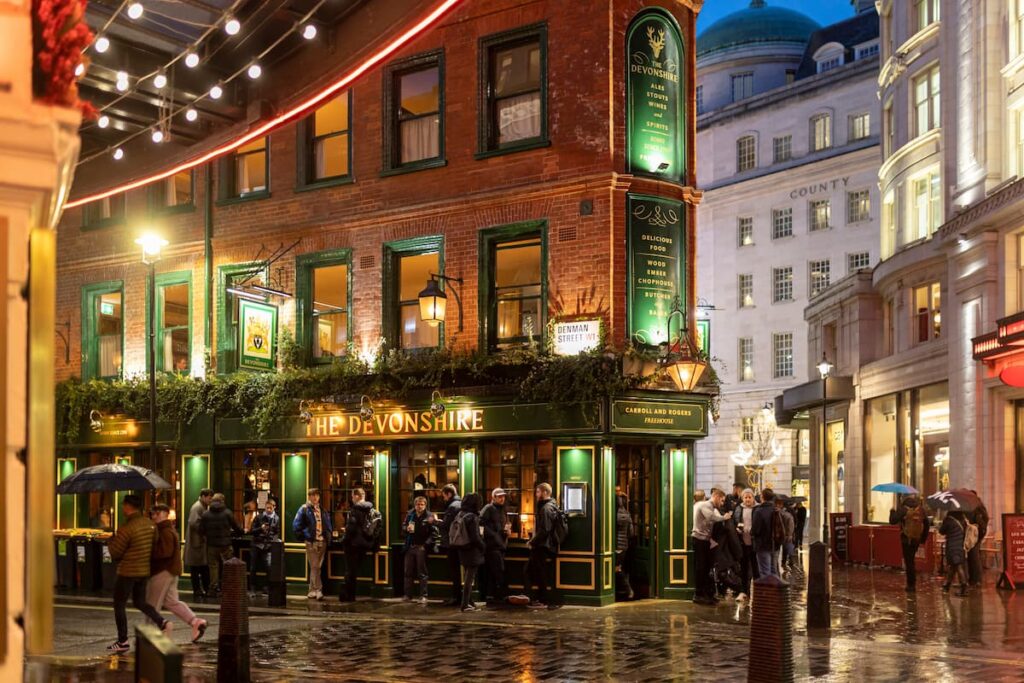A Cultural Staple with Quirks and History
British pubs are as iconic as red phone boxes and double-decker buses. Steeped in history and tradition, they’ve evolved from their medieval roots into a diverse and enduring social institution. While the settings range from 16th-century taverns to sleek craft beer bars, the unwritten rules of pub etiquette remain a crucial part of the experience. For visitors unfamiliar with pub culture, navigating it can be a rite of passage—or a social faux pas waiting to happen.
The enduring popularity of pubs dates back centuries, and each establishment offers a unique flavor of British life. Whether you’re ordering your first pint or deciphering a pub name like The Pyrotechnists Arms, understanding the structure, customs, and drink styles is essential to making the most of the experience.
Understanding the Many Faces of the Pub
Britain boasts an extraordinary variety of pubs. At one end of the spectrum are “wet pubs”—places that serve drinks only, often filled with locals and lively conversation. At the other are “gastropubs,” such as The Eagle in London, which revolutionized pub dining in the 1990s. In between are craft beer bars, brewery taps, micropubs (cozy, minimalist spaces focused on beer quality), and even eccentric “gin palaces” with ornate 19th-century décor.
Traditionalists may favour historic inns, many of which still retain low ceilings, flagstone floors, and tales of ghosts. Chain pubs, such as those operated by Wetherspoon or Greene King, offer predictable affordability and ubiquitous menus, while “freehouses” are independent and can curate more adventurous drink selections.
The visual identities of pubs—complete with whimsical names and hanging signs—reflect the nation’s storytelling bent. Names like The Bucket of Blood or I Am the Only Running Footman hint at rich histories or curious legends, while more common names like The Red Lion or The Royal Oak recall royalty and national symbols.
How to Order Without Offending the Locals
One of the most important rituals is ordering your drink properly. In most pubs, you won’t be waited on; patrons walk up to the bar and request their drink. But here’s the catch: British bars don’t operate on queues. Instead, one subtly makes their presence known at the bar and waits for eye contact from the bartender. Aggressiveness is frowned upon, but meekness could mean being ignored. The delicate dance of getting served is a British tradition in itself.
Drinks are typically bought in rounds—each person taking turns to pay for the group. Getting in that first round shows good etiquette and sets the tone for the evening. While modern pubs accept cards and digital payments, cash is still common, and some rare establishments even accept Bitcoin.
Beer: A National Treasure
Beer culture is deeply entrenched in British life, and most pubs offer a range of styles. Contrary to stereotype, not all British beer is served warm. Traditional cask ales (commonly called “real ales”) are served at cellar temperature, while lagers and craft beers are often chilled. The variety includes bitters, pale ales, stouts, and IPAs—frequently under names like Old Peculiar, Bishop’s Finger, or Pigswill.
The standard beer serving is the imperial pint—20 ounces, slightly larger than the American version. Half-pints are widely accepted, and third-pints or two-thirds are becoming more popular, especially in craft beer circles. Serious locals might even have their own tankard hanging behind the bar, and regulars often achieve near-legendary status.
Other Pub Staples and Social Codes
Not everyone comes to a pub for beer. Gin and tonics, ciders, whiskies, and non-alcoholic options are commonly available. However, the social fabric of the pub extends beyond the drinks menu.
There are archetypes to be aware of: the pub bore who regales strangers with dubious trivia, the silent local with their own seat, the sports fan glued to the TV during a match, or the barkeep who knows everyone’s story. Each contributes to the living theatre of the British pub.
You’ll find that most pubgoers are friendly, and asking about beers or traditions is often met with enthusiasm. However, some customs—such as not interrupting someone’s quiet drink, or not standing in front of the hand pumps—are sacred. Learn them, and you’ll be welcomed like a regular.
A visit to a British pub is a step into the heart of UK culture—one where history, community, and an expertly pulled pint all converge. From the first time you edge your way to the bar to the moment your round is returned with a nod of gratitude, every interaction is a slice of lived tradition. Master the rules, soak in the atmosphere, and you may find that the British pub isn’t just a place to drink—it’s a place to belong.


